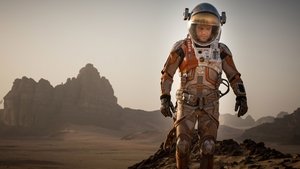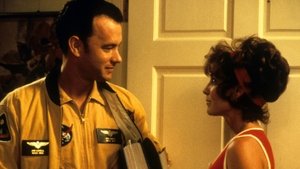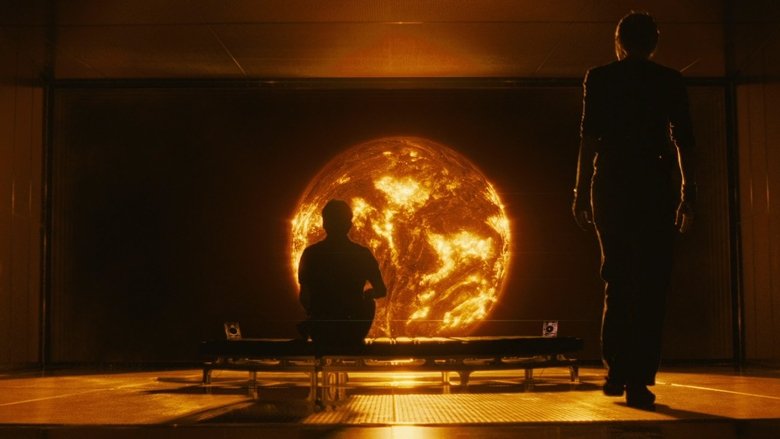Essential movies exploring outer space
Outer space has long captured our imagination, offering a canvas for stories ranging from thrilling survival to profound existential questions. These essential films take us beyond Earth's atmosphere to explore the vast unknown and the human spirit within it.



The cinematic exploration of outer space offers perhaps the greatest canvas for storytelling, pushing the boundaries of both technology and imagination. Films set among the stars can delve into the crushing isolation of the void, the awe-inspiring beauty of distant nebulae, the terrifying unknown of alien life, or the profound challenges of human survival far from home.
From the philosophical ponderings on humanity's place in the cosmos to high-stakes rescue missions and first contact scenarios, the genre allows filmmakers to tackle universal themes against an otherworldly backdrop. Creating realistic or even fantastical space environments presents unique technical challenges, often leading to groundbreaking visual effects that define eras of cinema, as seen in classics like 2001: A Space Odyssey or the groundbreaking creature design of Alien.
Whether focusing on the hard science of space travel and survival or embracing the swashbuckling adventure of space opera, these stories tap into our innate curiosity about what lies beyond Earth and what it means to be human when removed from familiar surroundings. This list showcases a diverse range of these cosmic journeys, each offering a unique perspective on the ultimate frontier.
13. E.T. the Extra-Terrestrial (1982)
Steven Spielberg's timeless classic tells the heartwarming story of a lonely boy, Elliott, who befriends an alien stranded on Earth. E.T. is a film that captures the magic and innocence of childhood, focusing on the powerful bond between a child and a creature from another world.
While not strictly about outer space travel itself, the film is deeply rooted in the concept of an alien visitor and the difficulty of navigating a strange new world. John Williams' soaring score is intrinsically linked to the film's emotional beats, particularly the iconic flying bicycle scene. It's a film that continues to resonate with audiences of all ages.
The sounds of E.T. were created by sound designer Ben Burtt, who used a variety of sources including a woman's gargling, jelly in a t-shirt, and recordings of raccoons, sea otters, and even his wife's snoring!

12. Close Encounters of the Third Kind (1977)
Steven Spielberg's follow-up to Jaws is a film filled with wonder and a sense of profound connection to the unknown. It follows ordinary people who are drawn by strange signs and visions to a remote location where humanity might make first contact with extraterrestrial visitors.
Unlike many alien invasion films, Close Encounters portrays the potential arrival of aliens with optimism and awe. The film's iconic five-tone musical motif, used as a communication method, is instantly recognizable. It's a story about faith, obsession, and the universal human desire to know we're not alone.
The Devil's Tower in Wyoming, the film's central location for the final encounter, became significantly more famous after the movie's release and is now a popular tourist destination for fans.

11. Guardians of the Galaxy (2014)
James Gunn brought a quirky, irreverent, and incredibly fun corner of the Marvel Cinematic Universe to the big screen with Guardians of the Galaxy. This space opera adventure follows a motley crew of cosmic outlaws who reluctantly team up to save the galaxy.
The film is known for its sharp wit, lovable characters (including a talking raccoon and a walking tree), and an absolutely killer soundtrack of '70s and '80s hits. It proved that even lesser-known comic book characters could become global sensations with the right blend of heart, humor, and spectacular space action.
Vin Diesel, who voices Groot, recorded his character's iconic line 'I am Groot' literally hundreds of times with different inflections to convey various meanings, and director James Gunn even had a special script version showing what Groot's lines really meant to help Diesel's performance.

10. Star Trek (2009)
J.J. Abrams successfully rebooted the iconic Star Trek franchise with this energetic and stylish origin story. Introducing a new cast as younger versions of Kirk, Spock, and the crew of the USS Enterprise, the film delivers thrilling action and explores alternate timelines.
The film captures the spirit of exploration and camaraderie that defines Star Trek while giving it a modern, blockbuster sensibility. The casting is spot-on, with Chris Pine and Zachary Quinto particularly shining as the legendary duo. It's a fast-paced adventure that brought Star Trek to a new generation while honoring its legacy.
Composer Michael Giacchino incorporated Alexander Courage's original Star Trek theme into his score, but only at the very end, signifying the crew finally coming together as the Enterprise bridge crew we know.

9. Alien (1979)
Ridley Scott's Alien is a landmark film that fused science fiction with horror, creating a terrifying experience aboard the commercial spaceship Nostromo. When the crew investigates a mysterious signal and brings an alien lifeform aboard, they find themselves hunted by a creature of pure, horrifying design.
H.R. Giger's iconic creature design is central to the film's chilling atmosphere, creating something truly unique and disturbing. The film masterfully builds suspense through dark corridors, claustrophobic spaces, and the unknown. Sigourney Weaver's portrayal of Ellen Ripley became a groundbreaking role for female protagonists in action and sci-fi.
Did you know the chestburster scene was filmed in one take with four cameras, and the reactions of the cast (except for John Hurt) were genuine surprise and terror, as they weren't fully told what was going to happen?

8. Sunshine (2007)
Danny Boyle takes us on a perilous journey aboard the Icarus II, a spacecraft on a mission to reignite the dying sun. With an ensemble cast including Cillian Murphy, Chris Evans, and Michelle Yeoh, the film blends hard sci-fi concepts with psychological thriller and horror elements.
Sunshine is visually striking, particularly in its depiction of the sun's overwhelming power and beauty. The film effectively builds tension as the crew faces not only the dangers of space but also internal conflicts and unexpected threats. It's a tense, atmospheric ride into the heart of our solar system.
Astrophysicist Dr. Brian Cox served as a science consultant on the film to help ensure accuracy in the depiction of space and the sun, although some creative liberties were taken for dramatic effect.

7. Moon (2009)
Duncan Jones' directorial debut is a quiet, intelligent piece of science fiction set on a lunar mining base. Sam Rockwell gives a phenomenal, virtually solo performance as Sam Bell, a geologist nearing the end of his three-year contract who makes a startling discovery about his mission.
Drawing inspiration from classic sci-fi films, Moon is a character-driven story that relies on atmosphere, psychological tension, and a compelling mystery rather than big special effects. It's a thought-provoking exploration of identity, isolation, and corporate ethics.
The film was made on a relatively small budget, relying on clever practical effects and miniature models for its lunar landscapes and base exteriors, proving that great sci-fi doesn't always need blockbuster spending.

6. Contact (1997)
Based on the novel by legendary astronomer Carl Sagan, Contact explores what might happen if humanity received a signal from intelligent life beyond Earth. Jodie Foster delivers a compelling performance as Dr. Ellie Arroway, a scientist driven by a lifelong search for cosmic answers.
The film thoughtfully balances scientific curiosity with themes of faith, politics, and the human condition. It's less about action and more about the profound implications of finding our place in the universe. The final sequence, depicting interstellar travel, is visually stunning and evokes a powerful sense of wonder.
Interestingly, a significant portion of the film's dialogue was improvised by actors, particularly in scenes involving the press conference and government hearings, adding a layer of realism to the chaotic events.

5. Apollo 13 (1995)
Ron Howard's gripping drama recounts the true story of NASA's ill-fated 1970 moon mission. Starring Tom Hanks, Kevin Bacon, and Bill Paxton as the astronauts aboard, the film perfectly captures the tension, ingenuity, and teamwork required to overcome an impossible crisis miles away from home.
The film is praised for its historical accuracy and technical detail, recreating the spacecraft and control rooms with meticulous care. The cast delivers powerful performances, bringing humanity and urgency to the real-life heroes involved. It's a testament to the human spirit and the phrase 'failure is not an option'.
To accurately simulate weightlessness, the actors filmed scenes aboard a KC-135 'Vomit Comet' aircraft, experiencing brief periods of zero gravity during parabolic flights. This commitment to realism paid off, giving the film an authentic feel.

4. The Martian (2015)
Based on Andy Weir's popular novel, Ridley Scott's The Martian is a celebration of human ingenuity and resilience. Matt Damon stars as Mark Watney, an astronaut accidentally left behind on Mars who must 'science the s***' out of his situation to survive and signal Earth.
The film grounds its survival story in realistic scientific principles (for the most part!), presenting complex problems and clever solutions in an accessible way. It's a surprisingly optimistic and often humorous take on extreme isolation, driven by Damon's charismatic performance and a fantastic supporting cast.
The production team worked closely with NASA to ensure accuracy in depicting the technology and procedures, making it one of the most scientifically grounded sci-fi films of recent years.

3. Gravity (2013)
Alfonso Cuarón delivers an absolutely breathtaking and visceral experience of being stranded in Earth orbit. Starring Sandra Bullock and George Clooney, this film is a masterclass in tension and visual storytelling, placing you right alongside the astronauts as disaster strikes the International Space Station.
The film is renowned for its incredibly realistic and immersive depiction of space, utilizing cutting-edge visual effects and long, uninterrupted takes that make you feel the disorienting lack of gravity and the terrifying silence of the void. Sandra Bullock's performance is a tour de force, carrying much of the film alone and conveying the primal struggle for survival.
Did you know that many of the scenes were filmed using innovative robotics and LED light boxes to simulate the shifting light of the sun and Earth? This allowed the filmmakers unprecedented control over lighting and camera movement in zero-g.

2. Interstellar (2014)
Christopher Nolan takes us on an epic voyage through spacetime in this ambitious sci-fi spectacle. Following a team of explorers searching for a new home for humanity, the film delves into complex concepts like relativity, wormholes, and black holes with surprising scientific rigor, thanks to the involvement of theoretical physicist Kip Thorne.
The practical effects used to depict the landscapes of alien worlds and the sheer scale of space travel are breathtaking. Coupled with Hans Zimmer's powerful, organ-heavy score that truly evokes the vastness and isolation of the cosmos, Interstellar delivers an emotional and intellectual punch. It's a film that not only explores the wonders of the universe but also the enduring bonds of family across time and space.
Fun fact: To create the realistic depiction of a black hole (Gargantua), Kip Thorne and the visual effects team developed new computer code based on actual physics equations, leading to scientific papers being published on the results!

1. 2001: A Space Odyssey (1968)
Stanley Kubrick's masterpiece isn't just a film; it's a cinematic event that redefined science fiction. Working closely with author Arthur C. Clarke, Kubrick crafted a visually stunning and philosophically profound journey from humanity's distant past to a mysterious future among the stars.
The film's groundbreaking visual effects, created long before CGI, still hold up today and set the standard for depicting space travel with awe-inspiring realism. Its deliberate pacing, minimal dialogue, and iconic classical music soundtrack contribute to an almost meditative experience, inviting viewers to ponder themes of evolution, technology, and the unknown.
Did you know the iconic 'stargate' sequence took nine months to film using a technique called slit-scan photography? A true testament to the film's ambitious vision and technical ingenuity.

